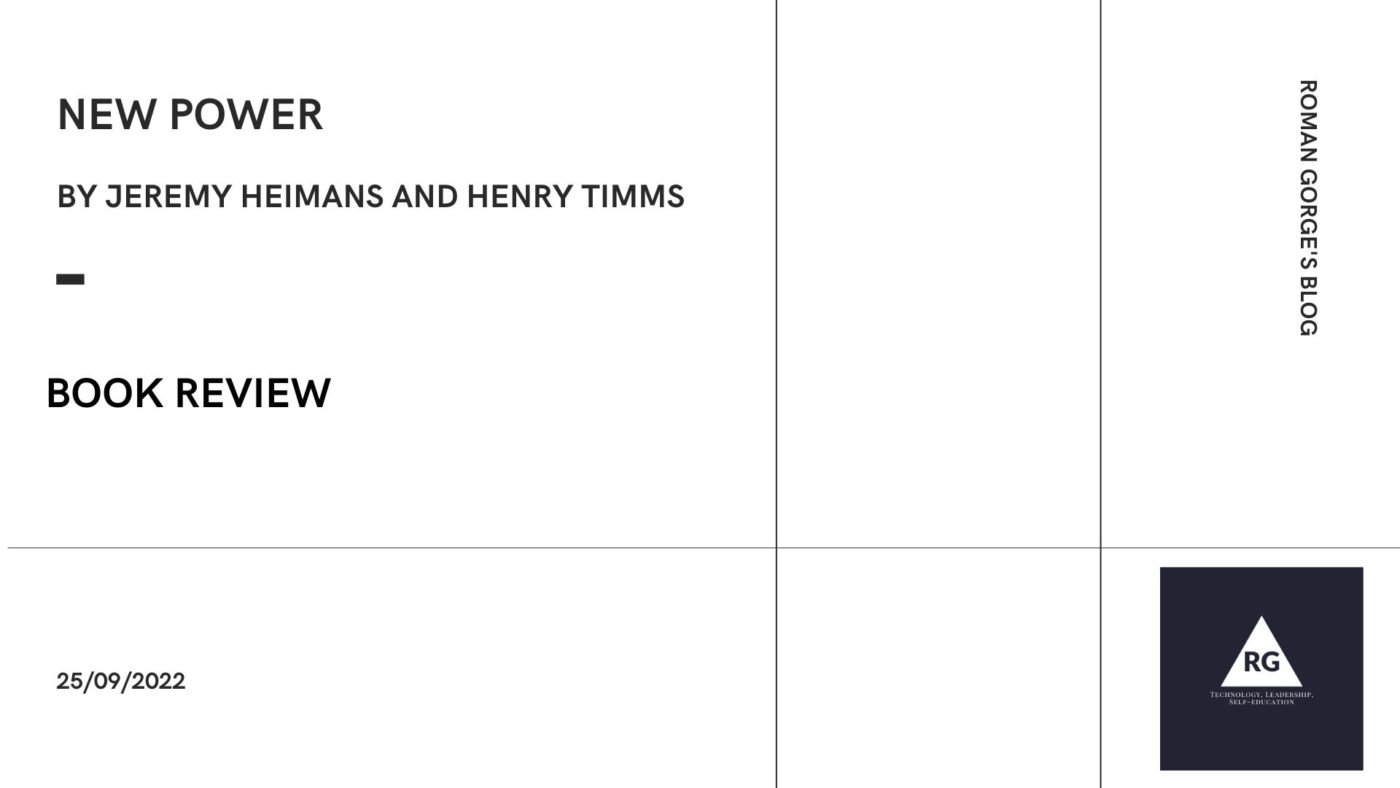New Power was written in 2017, but today it is even more actual than ever. It is clear that power – the ability to produce intended effects – can be obtained via different strategies. The modern technologies made possible to create the new strategies built on new principles. Crowdfunding, participation, shared responsibility – this is new power.
Old power works like a currency. It is held by few. Once gained, it is jealously guarded, and the powerful have a substantial store of it to spend. It is closed, inaccessible, and leader-driven. It downloads, and it captures.
New power operates differently, like a current. It is made by many. It is open, participatory, and peer-driven. It uploads, and it distributes. Like water or electricity, it’s most forceful when it surges. The goal with new power is not to hoard it but to channel it.
Heimans, Jeremy; Timms, Henry. New Power (p. 2)
The book analyzes multiple organizations, social movements and companies that use new power to achieve various results and solve different challenges. Create social movement (GetUP in Australia), spread ideas on scale (TED), rally people for the political campaign (Barack Obama) or get funding (BrewDog). It is very interesting to find patterns in behavior of so unlike entities.
The big part of the book is about building a crowd. A crowd that will not simply consume product/information/content but actively participate in a community and help to develop it. To measure it, the authors introduce “Participation Scale” and it is very much aligned with another book I read earlier this year.
New power is not only about methods, but about values as well. The book introduces another dimension that allows to create the mapping below:

The most practical part of the book for me was Chapter 9: Leadership and Chapter 11: New Power at Work. Younger generations, who grew together with the rise of disruptive Internet-based technologies have different values and expectations from the workplace. They (or maybe I should say “we” as I belong to the same group of people) are looking for more recognition, more feedback, more participation in decision making process. And most importantly, they see employer – employee social contract differently – there is no decade long commitment and loyalty. Is it good or not is another question, but companies have to adopt. And it is encouraging to see how Amazon’s policies and tools actually aligned with new power values and values.
For me, as a people manager, is very important to find the way how to give the power to my team, how to give “founder feeling” and how to create mutually beneficial relations between the company and an employee of a hyperconnected age. So, there are number of practices that I will implement at my work.
I highly recommend this book to everybody as it cover both philosophical and practical aspects of a new power world.
